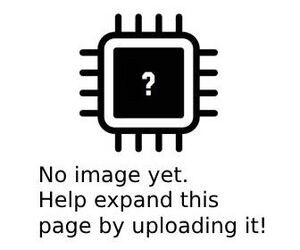More actions
| MacBook Pro A1990 Charger stuck at 5V repair | |
|---|---|
| Device | MacBook Pro A1990 |
| Affects part(s) | Motherboard |
| Needs equipment | multimeter, soldering iron, soldering station, thermal camera |
| Difficulty | ◉◉◉◌ Hard |
| Type | Soldering |
This article is a stub. You can help Repair Wiki grow by expanding it
Problem description
The charging circuit on the MacBook Pro A1990 is not communicating with the charger to send in 20V.

Symptoms
- On most cases, the board will not power up.
- No charging
Solution
Diagnostic Steps
Check voltage on PPBUS_G3H
Measure the voltage on PPBUS_G3H with your multimeter on voltage mode.
If it is missing, power down the board and measure resistance. If you measure less than 10 ohms that means you have a short here.
Check for corroded LDO cap for PP3V3_G3H around a CD3215
On right side of board, check under shielding by SSD under the right CD3215 for hidden corroded cap
Check for a bad CD3215
If the issue is a bad CD3215, one way to get an idea, is to see which does not boot loop. When you plug the charger in with the USB-C amp-meter, it will turn on for 2-3 seconds, then turn off and turn on again. Whichever port doesn't boot loop usually has an associated CD3215 that is bad. Also, the bad CD3215 will occasionally get hotter than the rest.
Repair Steps
PPBUS_G3H Short or absent
- If shorted
- Inject around 1 V with a 5 amp limit into PPBUS_G3H with a DC power supply.
- A larger tantalum capacitor is preferred to inject voltage to, as you will often need a lot of current to be pushed into the line to cause the shorted component to heat up.
- 1 V is usually sufficient. It is not recommended to inject over 1 V as if one of the CPU VRMs is shorted, you will end up killing the CPU or SSD.
- With voltage being injected, perform thermal imaging of the board. If thermal imaging is not available, feel around the board to see where it is getting warm. Once the area is localized, add a small amount of isopropyl alcohol to the area to localize the shorted component.
- Once the shorted component is localized, replace the shorted component.
- Inject around 1 V with a 5 amp limit into PPBUS_G3H with a DC power supply.
- If absent without a short:
- Check that PPDCIN_G3H is making it to the Intersil/Renesas ISL9240 (U7000).
- Measure PPDCIN_G3H (Normal diode mode reading is ~0.550) with a multimeter in voltage mode.
- The voltage should match that of the USB-C amp meter (5 V).
- If 0V is read, check for a short.
- If 5 V is read, check the current sensing resistors as the ISL9240 may have shorted internally causing the current sensing resistors to blow.
- Place the multimeter probes on each side of the resistors to measure the resistance, which should be within 5–10% of the reference. If a resistor is found out of spec, replace it and the ISL9240, as the resistor likely blew due to an internal short. Depending on the input voltage, the ISL9240 either buck or boosts the voltage to ~12 V; if USB-C voltage is 5 V, it boosts it
- PP3V3_G3H missing due to CHGR_EN_MVR missing due to bad ISL9240
- ISL9240 is not available for purchase. Donor would be required.
- Check that PPDCIN_G3H is making it to the Intersil/Renesas ISL9240 (U7000).
Corroded capacitors
If any are found, replace them.
faulty CD3215
If you identify a faulty CD3215, replace it.
T2 firmware can also cause the machine to be stuck at 5v. It is however, important to rule out other possible causes for the issue before re-flashing T2 firmware. Typically machines that have corrupted T2 firmware will be stuck at 5v 0.060 amps and typically will have PPBUS present and PP3v3_S5 missing. PP5V_S5 will often be present. T2 firmware can be re-flashed via Apple Configurator 2, however this will erase data in most cases. Try a "soft" Re-flash first by clicking Advanced options > Revive Device in Apple Configurator 2. Example video: https://www.youtube.com/watch?v=ywvDgn7JR_c
